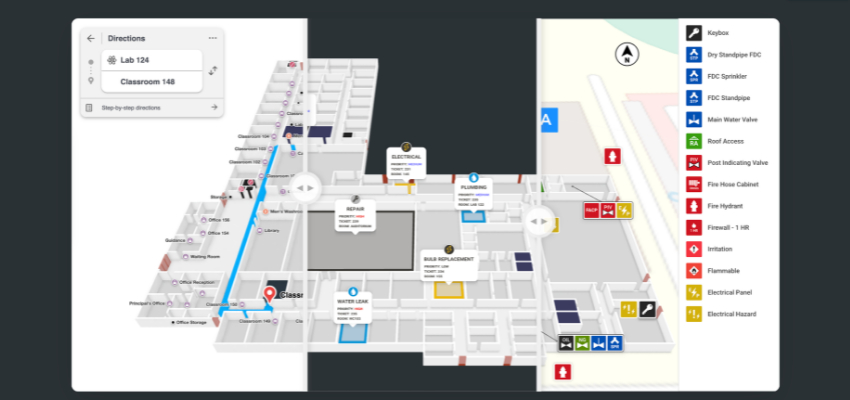Show:
Time Management Tips for Web Designers on Remote Work
Remote work is a common thing for creative industries like web design. But with the tons of benefits it brings, some challenges are still present: When working remotely, it’s not that easy to structure and manage your time for maximum productivity and efficient results.

In this article, you’ll find the challenges web designers can face when working remotely and 11 practical tips on time management to deal with them.
Top Challenges of Remote Work for Web Designers
Most representatives of creative industries like web design choose remote work because it’s an excellent opportunity to structure and spend time whatever it fits you best. The problem resides in an inability to balance that time right.
This challenge isn’t peculiar to web design only. Most articles on time management tips specify the following challenges you can face after deciding to work remotely:
- More work than in an office, with fewer breaks and longer working hours;
- No balance between work and leisure space and time;
- Feeling pressure to be constantly available in messengers for colleagues to see you’re working;
- Lack of skills to structure your working week and balance all spheres of your life accordingly;
- Lack of direct feedback on your work and immediately visible results; as a result, you face uncertainty on how well you work and use your time.
Time Management Tips for Remote Web Designers to Follow
To overcome the above challenges and minimize the consequences of wrongly-organized time for work productivity and overall well-being, remote web designers can try implementing the following time management tips:
1. Organize a home office
Working remotely, you still need a well-organized workplace because it’s critical for productivity. Do your best to divide a room or an apartment into two zones: for work and leisure. Ensure you have a comfortable desk and chair, and make it a habit to spend working hours there, not in your bed.
Such a trick with a home office will help “cheat” your brain and set it up for better work. Plus, spending your working hours at a desk, not in bed or sofa, serves your better health.
2. Set work hours
Decide on the particular hours you’ll spend working. Yes, it’s a huge temptation to work when inspiration strikes you or whenever it happens you’re home alone; but time management doesn’t work this way.
You need to set your work schedule and stick to it. Let your family and friends know that you’re working, let’s say, between 10 a.m. and 5 p.m. so that they won’t disturb you during that time. This schedule will also help you avoid overworking: Once your working day is over, turn off your laptop and continue with other tasks unrelated to web design.
3. Try time blocking
Time blocking is a method of scheduling your working day into controlled units. Set a definite amount of time for every task in your calendar and stick to it during the day. It will help avoid distractions, procrastination, and switching to other, less critical concerns.
A trick that will help you here is a timer. For instance, you assigned a two-hour time block for a task. Set a timer for these two hours and start working on the job until the time is over. Then, take a break and move to another time block in your to-do list.

4. Avoid task switching
For most people, it’s pretty challenging to focus on one task and avoid distractions while working, so they do the thing known as task switching. Do your best to avoid that in your remote work as a web designer because it will destroy your productivity.
If you have to deal with many projects and are afraid of missing deadlines, try task batching. Group like tasks together and align particular time spots for completing them. Say you’ll spend Monday mornings emailing clients, Wednesday afternoons will go to research, etc.
5. Have a toolbox at hand
As a web designer, you probably have a set of tools you use on every project. For example, it can be a collection of themes and plugins, tools like Photoshop or Sketch, software for creating websites, a wireframing tool, etc.
With a ready toolbox at hand, you’ll work faster and more effectively because you won’t spend time hunting for instruments and deciding which tools to implement in designing every new project.
6. Use templates like a boss
Make it a habit to save your design process templates while working so you could customize them for other projects later. Not only does it save tons of time, but it can also help organize workflow for more efficient work.
The more structured your work process becomes, the easier it will be to focus on the creative aspect of your job and prevent burnouts. Templatizing your design workflows can also enable you to break up longer processes into more manageable tasks, therefore avoiding work overwhelm.
7. Automate whatever you can
The remote work of a web designer is not about creativity only. The chances are that you’ll have to deal with time-consuming admin tasks like scheduling meetings, tax management, invoicing, communication with clients, and more.
If more than 50% of your workday is about such work, it’s time to reevaluate your workflow and think about automating some tasks with software. It won’t make you 100% free but allow managing your time better.

8. Plan breaks and stick to them
Your web design productivity is not only about spending hours on projects but also your ability to take breaks from work. Studies say that remote workers take fewer breaks, which leads to burnout, health problems, overworking, and stress.
Breaks are critical for proper time management. Do your best to balance work with rest, organize regular breaks every 90 minutes, and — which is most important — don’t feel guilty for that. Even a short, 10-minute break can help you recharge batteries and improve work efficiency.
9. Know your rabbit holes
Rabbit holes are those things we do during work for “just a minute.” To manage your time better, ensure you know those holes of yours and organize everything to avoid distractions:
You can turn off phone notifications, use apps to block some websites you know you can visit “for a minute” but spend hours there, wear earphones to let your family know they can’t disturb you now, etc.
10. Learn to say no
When working remotely, it may seem to you that you aren’t doing enough. There’s always fear that a boss or a client will think you’re lazy and do nothing but getting money for nothing. To deal with this fear, you may want to grab all the tasks at once and try to complete everything as quickly as possible. Such a tactic doesn’t work.
Not only does multitasking make you 40% less productive, but it also negatively impacts your brain health. For your well-being and better time management, learn to prioritize tasks, say no to those with no value to a project, and practice delegating some tasks when possible.
11. Change your workplace from time to time
Remote work doesn’t mean you should design from your home office only. Try moving to a co-working space, a library, or a cafe from time to time: It will help create boundaries between work and leisure, setting your mind on the “working” mood and leading to your better productivity.
Plus, it’s an extra chance to avoid overworking. You’ll know that you have only 2-3 hours in the cafe to complete a task, and you’ll manage your time accordingly.
In a Word
Now that you know so many time management tips for more efficient work as a remote web designer, it’s time to organize your workflow in a time-efficient way. Organize your home office like a boss, remember to set working hours and breaks, avoid multitasking and distractions, and don’t be afraid of delegating some tasks to others if necessary.
About the author:
Lesley Vos, Content Creator at Bid4Papers. With 7+ years of experience in web writing, she’s a regular contributor to websites on digital marketing, content creation, and social media. See more works in her portfolio.

 Return to Previous Page
Return to Previous Page








